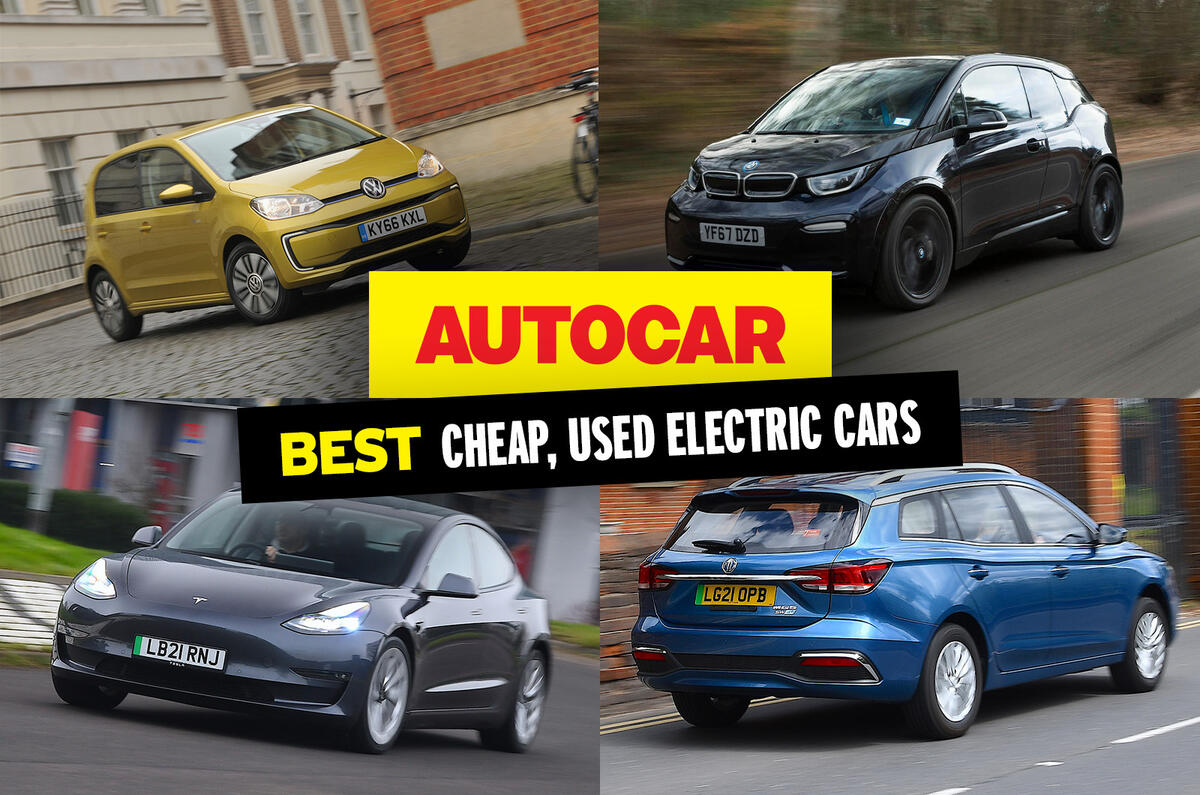Strong sales of new electric cars over recent years is great news for used car buyers.
Growing numbers of pre-owned electric cars, combined with today’s weak residual values, mean that buying one of the best cheap used electric cars is no longer a pipedream.
There’s now enough variety out there that we’ve been able to weed out the less appealing choices, yet most of our top 10 used EVs come in below £10,000.
Sure, a bargain-basement EV may still involve a compromise or two, but there’s no need to hunt out a G-Wiz to go zero-emissions on a shoestring: cutting-edge design is an affordable option.
EV ownership’s rewards can outweigh the inconveniences, especially if you have off-street parking and generally use your car for regular, shorter commutes.
Pick the right one for your needs and you can save enough to comfortably afford hiring a more suitable vehicle for the occasional long trip or furniture store sale.
We peg the BMW i3 as the best cheap used EV on the market at the moment. It looks thoroughly modern, starts from around £5,000 and its high quality interiors are wearing very well.
Best for: cutting-edge design
Price: from £5000
BMW took a clean-sheet approach to the electric revolution and its i3 still feels futuristic this long after its debut.
It was sold in the UK for almost a decade, so there’s a good used supply, and prices have stabilised at only a small premium over a BMW 1 Series of comparable age and condition.
What makes the i3 great? It’s lightweight, it's aerodynamic and it has very little wasted space within its distinctively tall bodywork.
That first point is the important one though: where other manufacturers modified heavy, combustion-engined platforms to accommodate weighty batteries, BMW created a bespoke, light structure that enabled the i3 to maximise its range.
For an early EV, it’s quick, especially in sportier i3s guise, and for long distances the REx range extender option is surprisingly economical when using petrol to charge the battery.
That investment in expensive materials and the i3’s high-profile image means it’s a high-quality product that has aged well.
Repairs can be expensive, but it still feels like a car of the future, despite edging towards modern classic status.
Read our BMW i3 review










Join the debate
Add your comment
Tesla Model 3 is the only one that is good for a one-car person. The other electrical cars here may push that person to electrocute oneself.